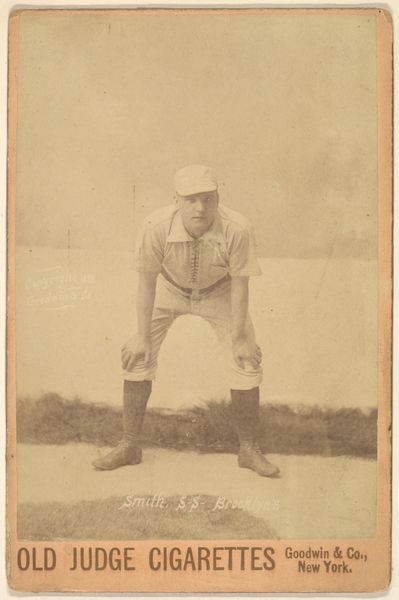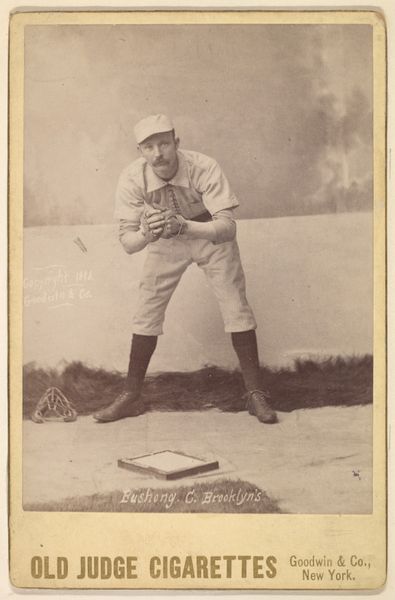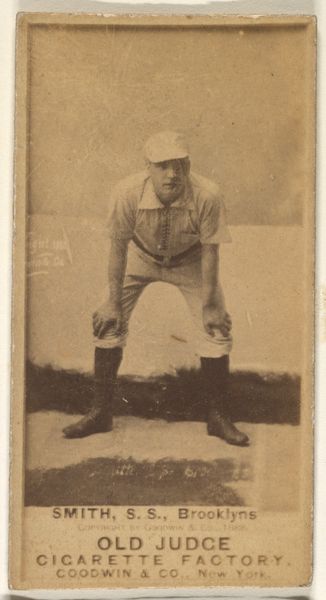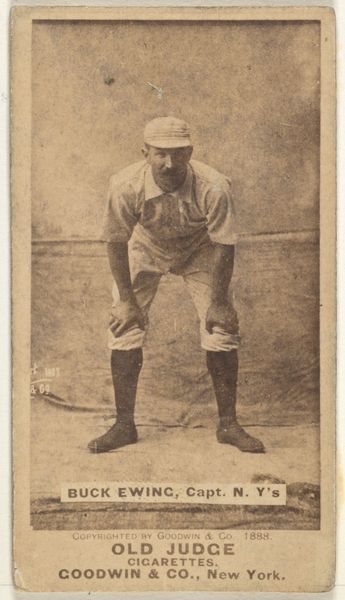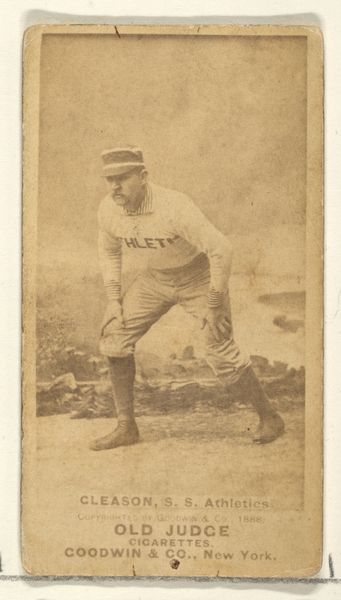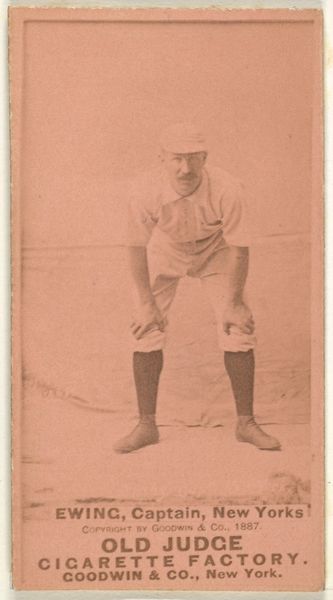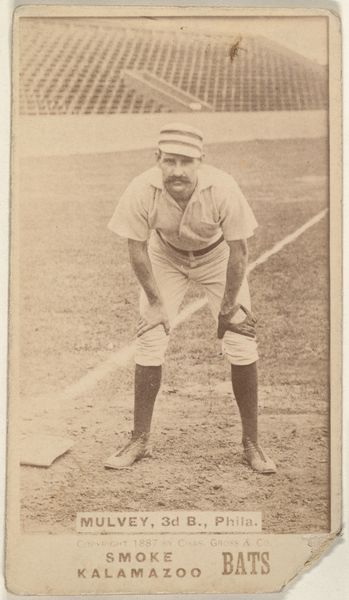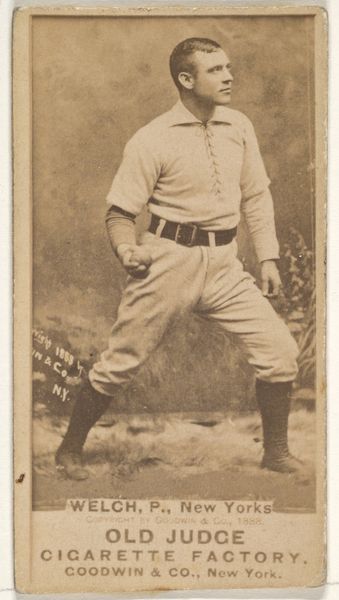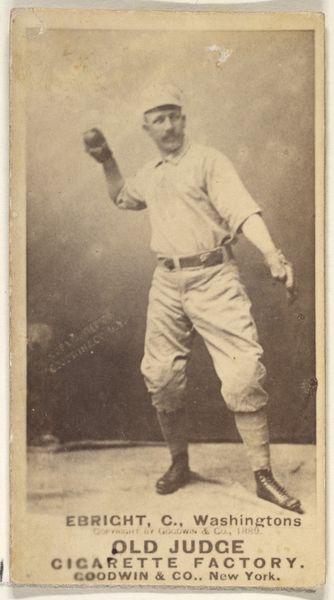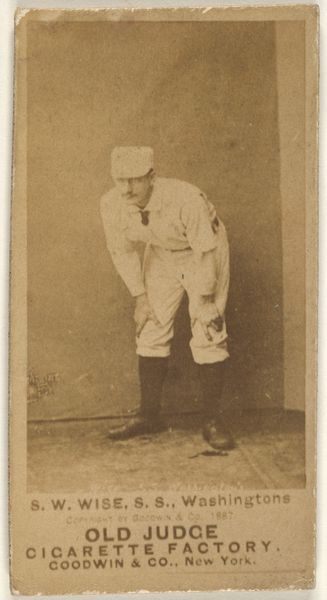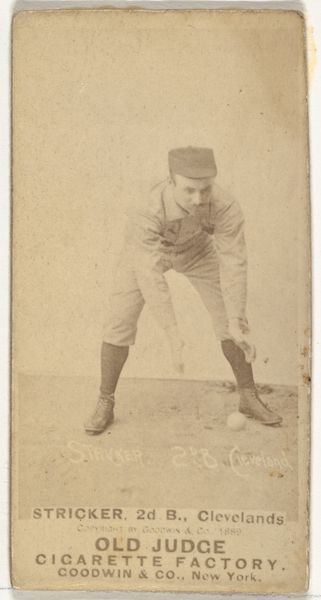
Ewing, Captain, New York, from the series Old Judge Cigarettes 1887
0:00
0:00
drawing, print, photography, albumen-print
#
portrait
#
drawing
# print
#
impressionism
#
photography
#
historical photography
#
academic-art
#
albumen-print
Dimensions: sheet: 6 1/2 x 4 3/8 in. (16.5 x 11.1 cm)
Copyright: Public Domain
Curator: Let's discuss this intriguing albumen print, “Ewing, Captain, New York,” dating back to 1887 and part of the "Old Judge Cigarettes" series produced by Goodwin & Company. Editor: Immediately, I'm struck by the muted sepia tones, almost like looking at something recovered from an archaeological dig. And the slightly awkward pose—ready but also stiff. It speaks of the performative nature of early photography. Curator: Precisely. Consider this within the context of the burgeoning popularity of baseball and the advertising industry at the time. These cards, included with cigarettes, served a dual purpose: promoting the sport and fostering brand loyalty. Goodwin & Company brilliantly capitalized on this intersection. Editor: It's fascinating how such an everyday object – a cigarette card – elevates a working-class figure like Ewing into a sort of collectible hero. And look closely at the surface—that sheen of the albumen, the meticulous way the image is adhered to the card stock. It belies the mass-produced nature of the item. Curator: The process is crucial to understand its cultural impact. Albumen printing, while popular, required significant resources. It reflects a certain investment in image-making even within a commercial context. Think about the photographic studios, the photographers, and the labor involved. Editor: The name “Old Judge Cigarettes” itself hints at this association between the established, authoritative, and trustworthy (the "judge") with the emerging spectacle of sport. What materials comprised the printing process? Were different papers used? How did they affect the tones, light? This is a mass cultural object whose materials contribute to its aesthetic. Curator: And the choice of a baseball player, a figure embodying strength and skill, aligned perfectly with the masculine ideals marketed by the tobacco industry. This portrait reinforces particular socio-political ideals. It isn’t just about baseball; it is about constructing an idea of American identity. Editor: It prompts us to question who controlled that image, what conditions the player negotiated or not, who really profited. Looking at the pose also prompts consideration about his working conditions and even class status in comparison to his potential fans. It seems to be both about creating idols for admiration while simultaneously highlighting distinctions in class and background. Curator: It encapsulates a moment of transformation, reflecting the burgeoning intersection of commercialism, sport, and identity formation. Editor: Yes, an ephemeral object holding considerable insight into the construction of American culture and the complex labor practices which brought it into being.
Comments
No comments
Be the first to comment and join the conversation on the ultimate creative platform.
